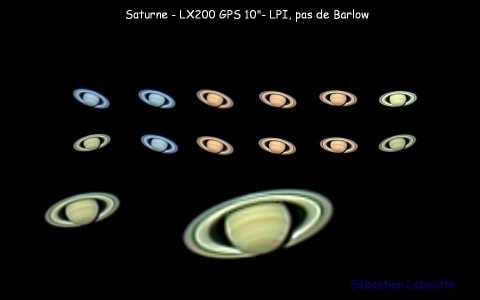
Compilation showing images of Saturn taken with the LX200 at prime focus, without using a Barlow lens.
Small images are not processed, others were expanded and processed with Iris from the small images.
Wavelet processing, retouching colors and thresholds.
Small images are not processed, others were expanded and processed with Iris from the small images.
Wavelet processing, retouching colors and thresholds.
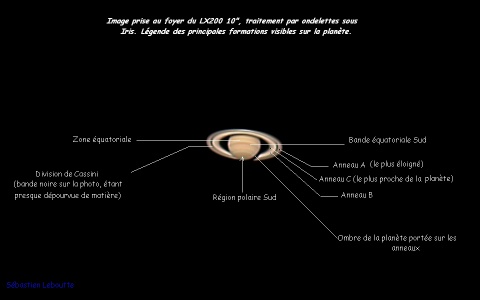
Image acquired in January 2005 with the LX200 at prime focus and processed with Iris.
The legend shows the major areas of interest on the planet that can be observed with an amateur telescope.
The legend shows the major areas of interest on the planet that can be observed with an amateur telescope.
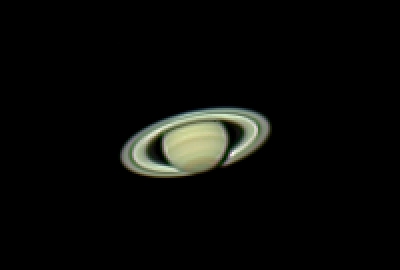
Saturn at opposition in 2005.
Equipment used: Meade LX200 GPS 10 ", Meade LPI camera, no Barlow, image cropped.
Notice the cloud bands on the globe, as well as the famous Cassini division in the rings.
The South Pole is at the bottom.
Equipment used: Meade LX200 GPS 10 ", Meade LPI camera, no Barlow, image cropped.
Notice the cloud bands on the globe, as well as the famous Cassini division in the rings.
The South Pole is at the bottom.
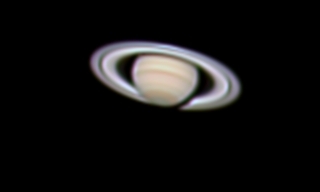
From an image similar to the previous one, it is possible to use image processing software to change the scale of the image, the colors, highlight some details ,...).
The original size of the photo has been doubled for greater legibility.
A slight Gaussian blur was applied to the image in order to "erase" pixels (visible on an image at top of the page)
The original size of the photo has been doubled for greater legibility.
A slight Gaussian blur was applied to the image in order to "erase" pixels (visible on an image at top of the page)
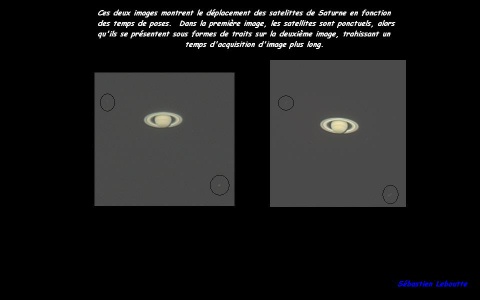
Acquisition times are an important consideration in planetary imaging.
Indeed, if they are too long, the rotation of the planet creates a "fuzzy" on the final image because the details have moved during shooting.
In this image, you can see the movement of the satellites of Saturn against the sky's background.
Indeed, if they are too long, the rotation of the planet creates a "fuzzy" on the final image because the details have moved during shooting.
In this image, you can see the movement of the satellites of Saturn against the sky's background.
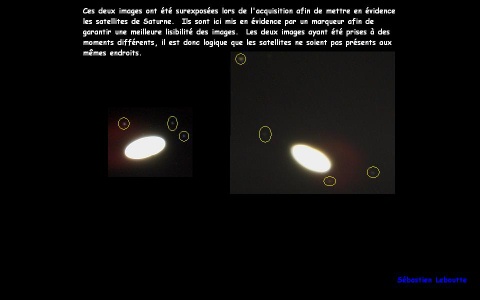
In this image, Saturn was deliberately overexposed to highlight its satellites.
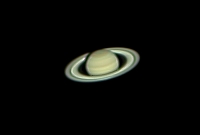
This image taken in January 2005 (when the planet was in opposition) isn't processed.
It was taken with the LX200 and a Meade LPI "web cam" without a Barlow lens.
The image is smaller, but has greater clarity.
It was taken with the LX200 and a Meade LPI "web cam" without a Barlow lens.
The image is smaller, but has greater clarity.
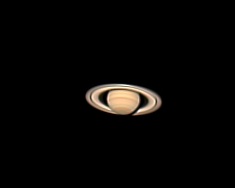
The following three images were taken in January 2005, at the prime focus of the LX200 10 ", with the Meade LPI.
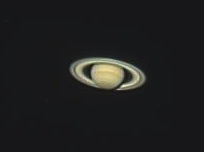
Image processed with Iris.